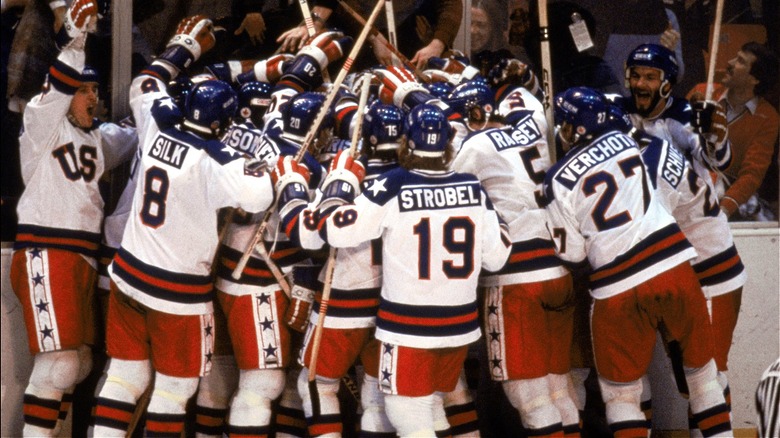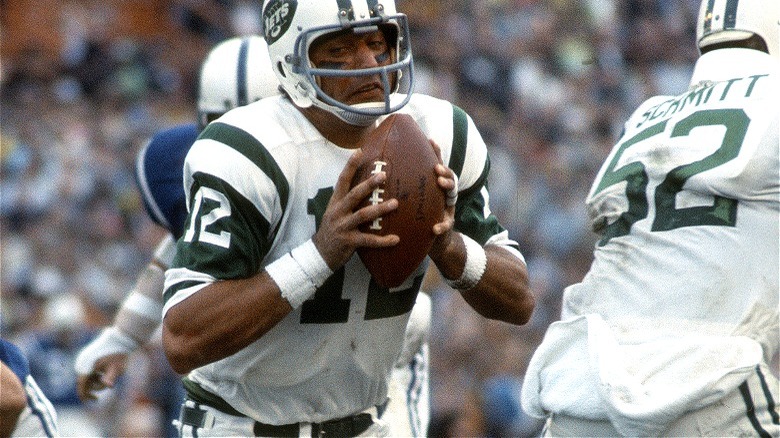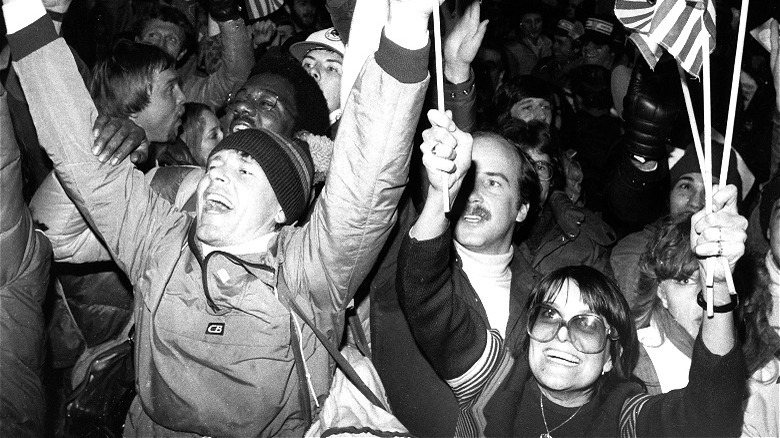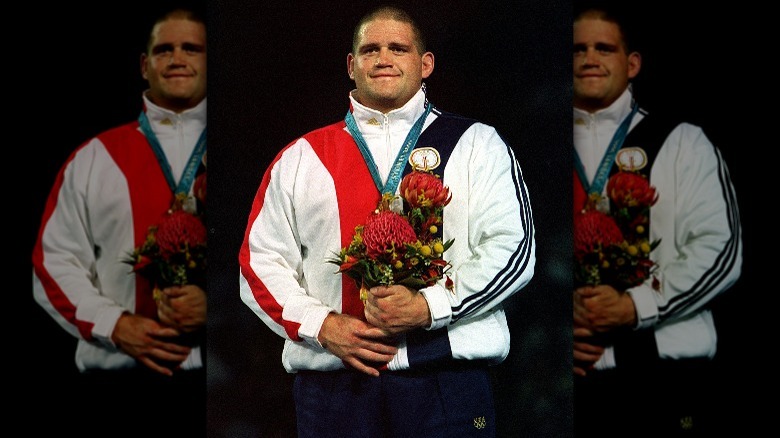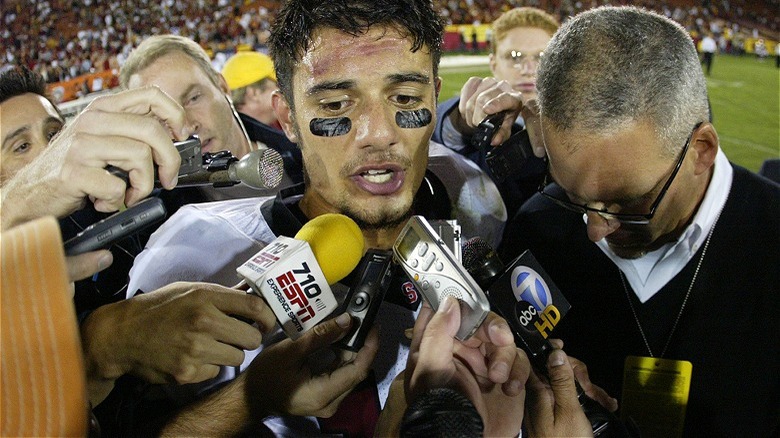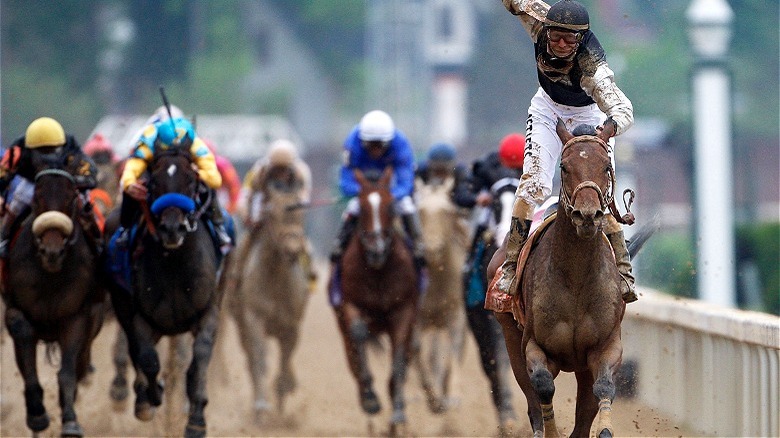5 Of The Biggest Sports Betting Long Shots Of All Time
Betting is always a gamble, but some bets are more of a long shot than others. This feels especially true when it comes to sports betting. Hail Mary victories, surprise upsets, unbelievable plays and the overnight star players who make them. This entire rollercoaster of emotion and possibility is what makes watching sports so thrilling, but can make betting on them a real nail-biter.
Friendly wagers on any match can make or break fortunes, and become gambling lore when those humble games go on to make history. While there is no such thing as a sure thing, the biggest sports betting wins of all time might momentarily make sports bettors forget that risk is always involved when it comes to the big game. Even star athletes have endured bad beats at the sportsbook, with Michael Jordan possibly being the most legendary among them.
Sportsbooks have moved away from using "risk-free" bets to entice bettors, but risk hasn't moved away from any wager. Still, who doesn't love a big win story over long odds? Read on to learn about some long-shot wins, and some of the riskiest sports bets of all time.
1969 Super Bowl
The Super Bowl is known for its big wins and heartbreaking losses, and for some serious sports betting. Considering how much people bet on Super Bowl LVIII in 2024, it's fun to look back and consider the against-the-odds winners of Super Bowl III in 1969. The title game saw the New York Jets face off against the Baltimore Colts. Back then, the Jets were part of the American Football League (AFL) and had a lot to prove to the National Football League (NFL).
New York was an 18 ½-point underdog, with most believing Baltimore's defensive line was just too strong for the Jets to handle. However, the Jets would, of course, go on to win the 1969 Super Bowl in a history-making upset, beating the Colts 16-7. A huge factor in that win? Jets QB "Broadway Joe" Namath, who predicted his team's win before the game, to the chuckles of the press. "We're a better team than Baltimore," Namath said before the game (via Sports Illustrated). He also told a press room that he "guaranteed" a win.
"There are more underdogs in the world than there are favorites," Namath told AARP, many years after his big win. "Our win was enjoyed by so many people because they are underdogs like we were. We're all underdogs from time to time."
The Miracle on Ice in 1980
Some long-shot victories make such risky sports bets that movies are made about the experience. Such is the case with the U.S. men's hockey team's stunning win over the favored Soviet Union at the 1980 Winter Olympics in Lake Placid, New York. But why was this upset so upsetting to Soviet fans and so thrilling to those cheering for Team USA? The Soviet team had won gold at every Olympics they'd participated in up to that point. In addition to those four wins, the Soviets had also won every face-off they'd played against the United States from 1960 through 1980, including an exhibition game at Madison Square Garden prior to the Olympics.
By contrast, Team USA mostly comprised players fresh out of college and new to the professional game and, as Action Network noted, there was little data on the players and the team as a whole. Per the outlet, a 2010 Monte Carlo simulation gave Team USA 1,000-to-1 odds of defeating the Soviet Union team in 1980.
The game between Team USA and Team USSR wasn't even the gold medal match. It was a semi- final match that would determine who would get to play for the gold (which the U.S. won). Team captain Mike Eruzione scored the final point in the game, as the United States won 4-3. The unlikely win inspired the game to be called the "Miracle on Ice" by the press, with Al Michaels' famously asking in the final seconds of the game, "Do you believe in miracles?"
Rulon Gardner in 2000
United States Olympic contenders really have a thing for underdog "miracle" stories, and therefore with surprising sports bets, as well. The "Miracle on Ice" saw a similar reprise with the "miracle on the mat" in a 2000 Sydney Olympics Greco-Roman wrestling match: The David-and-Goliath style win by Wyoming's own Rulon Gardner over the Russian defending champion, Aleksandr Karelin.
Bettors might have thought they were putting smart money on Karelin before the 2000 Olympics. The so-called "Russian Bear" hadn't lost a match in 13 years by the time he faced off with relative newcomer Gardner. While Gardner had worked his family's dairy farm and wrestled through college, Karelin won gold medals for wrestling at the 1988, 1992, and 1996 Olympics. He also developed his signature move, a reverse body lift called the Karelin Lift. Before Rulon Gardner's fateful meeting against this formidable adversary, his odds of winning the match were 2,000 to 1 (via Sportsfreak).
In 2000, Rulon Gardner defied those odds, while also defining underdog Olympic victory. "It took everybody by surprise when I won gold," Gardner told The New York Times in 2008. "Did I think I would? No. But what the Olympics bring is the opportunity to dream. I'm still dreaming."
Stanford vs. USC in 2007
Fun in the sun, meet fun in the stun. The 2007 Stanford vs. USC football game was played in sunny Los Angeles, and went down as one of the most stunning upsets in college football history. While the Stanford Cardinal only beat USC by a single point for a final score of 24-23, Stanford was a 41-point underdog before this tide-turning game.
Additionally, Stanford was 1-11 in its previous season, while USC went 11-2. Also, Stanford's game preceding this one was against Arizona State, which trounced Stanford, 41-3. In a game the previous year, USC crushed Stanford, 42-0. Stanford wasn't just an underdog when it came to playing USC, it was practically the underdog's chew toy.
So what changed the literal game? Well, possibly the players. In a moment ripped straight from any inspirational sports movie worth its salt, Stanford quarterback Tavita Pritchard made a career-starting pass to Mark Bradford, on fourth-and-goal, with 49 seconds left on the clock. Bradford received the pass with a leap, and landed with his feet inbounds, winning the game. Said Bradford at the time, "It feels like a movie," (via The New York Times). "This feels like Disney really happened to us." For some lucky sports bettors who bet this long shot, it must've felt like Disney happened to them, too.
2009 Kentucky Derby
Sometimes long-shot wins that pay off for those betting against the spread truly do rely on actual lengths. This is true for Mine that Bird, the horse that won the 2009 Kentucky Derby by 6 and ¾ lengths of racetrack, and against 50-1 odds. Not bad for a gelding that cost his owners $9,500, one of whom truly didn't believe Mine that Bird even qualified for the Derby. "In fact, I hung up three times, I didn't believe them. I thought it was a friend playing a joke or something," co-owner Mark Allen told KOB4 New Mexico in 2024.
Mine that Bird's victory wasn't a joke, even if it was surprising to the horse's trainer and jockey. "I had no real feeling about how we'd do, but we came here to be competitive," trainer Chip Woolley told The New York Times after the big victory. The race and win were so dramatic they inspired a movie: 2014's "50 to 1" starring Skeet Ulrich. Jockey Calvin Borel raced Mine that Bird through a wet track, leaned into a far final turn, and claimed a victory that brought tears to his own eyes, let alone a couple sports bettors'.
